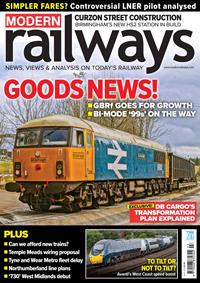|
|
The Hixon verdict: Hovercraft on the Channel: Strange sundries psychology: The end of the "Master Cutler": Complimentary train meals
Letters
Accident report: Hixon level crossing
SR Central Division's combined engineering depot
New Harwich-Hook ferry
Portsmouth resignalling scheme
BR and the rolling stock industry
Traffic Divisions of BR-12: Norwich Part 1
Rapid Transit Quarterly
Government's London plan
Towards the 150 m.p.h. railway: ParT2
Telephone dialling on the New York Washington "Metroliners"
Lightweight current collector by Brown Boveri
Winter-proofed Japanese e.m.us.
The end of steam on British Rail
Corporate planning
Belgians seek high-power diesels and electrics
Beyond the Channel
Today and tomorrow
98-wagon test of Westinghouse air brake distributor
Motive power report
Equipment
EVERY area of human failure that contributed to the Hixon level crossing disaster is succinctly identified in the official report. So far as the Ministry and the railways are concerned, one is stupefied at the characteristically insular attitudes which ignored so much Continental experience in the introduction of automatic half-barriers, as regards both publicity and statutory provision for their negotiation by abnormal loads. Seeing that both Ministry and railways are blamed for miscalculation, it will be less than just if the BRB has to foot the bill for the alterations recommended by the enquiry. Sensibly, priority of response will be on modification of existing a.h.b. installations, to limit the period of confusion through existence of different a.h.b. layouts and operating systems. Alteration of "second train coming" sequences is being treated first; the simpler cases should have been dealt with by the end of the year and the whole lot within 12 months. Execution of the road works [ advocated at a.h.b. crossing approaches will depend on the workload of contractors: BR are discussing the position with local authorities. In all, the modification of existing crossings is likely to cost over £lm. The operational time cycle changes alone will involve £1m, for in some instances signalling alterations will be necessary. Installation of the amber warning lights on the road side will add at least £75,000 to the bill and the road works will not be far short of £^m. With all but one of the tribunal's recommendations we have no significant quarrel. It is soundly sensible to press on with further installations, but by areas so that publicity can be effectively concentrated, now that the Ministry, in accepting the enquiry's findings, has reluctantly withdrawn its objections to general propaganda campaigns and submitted to the report's strictures on the way public education in a.h.bs. was handled before Hixon. The extended time cycle is worth a trial, though there is no evidence from the Continent that 24sec or thereabouts is inadequate, provided that road users have been properly indoctrinated. We doubt whether the elaborate segregation of road lanes at the approaches to a.h.b. crossings is necessary; in our view automatic cameras to catch light-jumpers and serve as prima facie evidence for automatic 12 months' deprivation of driving licence would discourage zigzagging effectively enough. Also needed is periodical police supervision of a.h.b. crossings to enforce the sensible road user code of discipline proposed for insertion in the Highway Code.
The report's conclusions on abnormal loads, however, are unsatisfactory. After all, the enquiry might never have been held but for the horrifying outcome of human error involving an outsize road vehicle on an a.h.b. crossing. Yet the report is content to guard against a recurrence simply by making it mandatory for a lorry driver to ring the signalman before attempting to cross, plus a requirement that all a.h.b. locations are shown on special load route orders. The scope for disastrous failure by one man has still been left undesirably wide. The Dutch and French statutory requirement of prior arrangement between road operator and local railway HQ of an abnormal load movement over an a.h.b. has been rejected to preserve "ease of control"—which isn't good enough in the afterlight of the Hixon carnage. The police have to approve abnormal road movement schedules in advance; moreover, neighbouring forces sometimes disagree on the most convenient times because of differing local traffic conditions, so that loads have long lay-bys on police borders. Is avoidance of traffic congestion a more powerful justification for delaying heavy load movements than avoidance of a.h.b. crossing disasters? The other defect of the report is that it cursorily dismisses the issue of a.h.bs. on 100 m.p.h.-plus as a matter for future debate. We reject one '' press view that trunk routes are already operating too fast and frequent a service for a.h.b. safety; there is no evidence here or abroad to support this view. On the other hand, every railway seeking high speed is concerned



